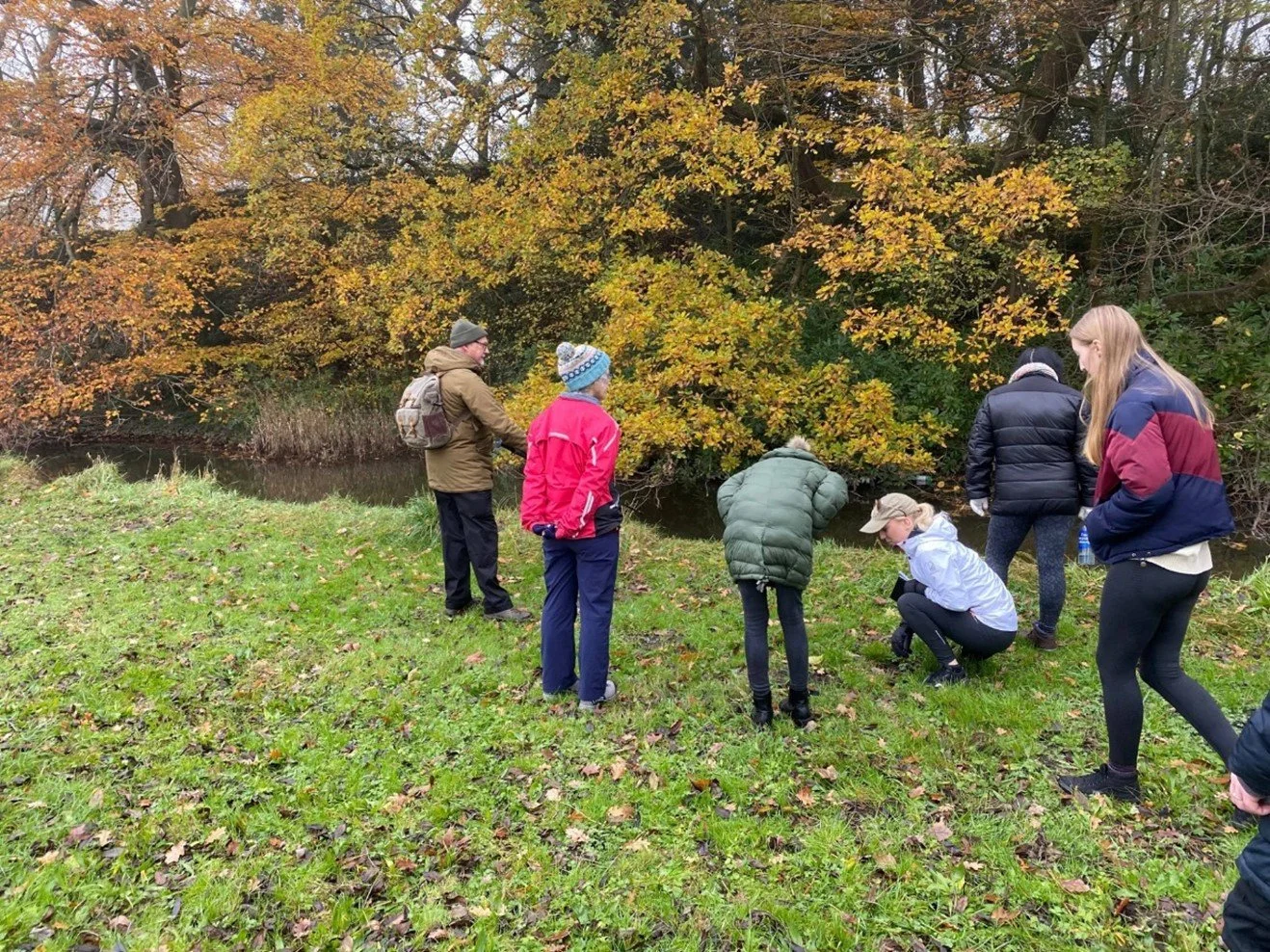Tales from the Riverbank: The Life of an Otter Researcher
Figure 1: An otter. PC: Jeff Chard
Student Spotlight - Holly Hulme
I began my PhD journey in October 2022, and I was completely new to studying otters despite my background in freshwater ecology. Growing up in Devon, the closest I had come to the species was a visit to Dartmoor Otter and Butterfly Sanctuary in the summer previous. By the time I had arrived at the Cardiff University Otter Project, I had hoped I would have seen a few more alive before witnessing a deceased individual on the table of a post-mortem laboratory.
My first post-mortem shadowing was an interesting experience to say the least, but an incredible learning opportunity. The skilled team at Cardiff identified the various organs and techniques to me and I was able to see how the data I would use in my project was being generated from the front-line. Observations and body measurements are recorded and biological samples are archived, including liver samples. With further laboratory processing, otter livers can be used to detect a wide range of chemicals at a high resolution in comparison to samples taken from lower trophic levels.
Outside of the lab, plenty of other opportunities have arisen from my studies. I was lucky enough to be trained by the South Wales Otter Trust on how to conduct field surveys, where I learned about spraint, footprints, anal jelly, slides and tail marks in the classroom before putting things into practice in our local park. I was excited to immediately find some fresh spraint, and later some footprints. My walk to the office each morning hasn’t been the same since… I’m still determined to get my first wild otter sighting! I’m sure my friends and family are sick of trying to find otter droppings on every outing by now.
Figure 2: Surveying with the South Wales Otter Trust in 2022
As I continue to develop my understanding of otter behaviour and ecology, my research has evolved, fuelling my enthusiasm to delve deeper into the intricate ways pollution affects not only my chosen study species but also the broader ecosystem. Emphasising the significance of long-term monitoring, otters emerge as crucial early warning indicators for potential pollution in our freshwater systems in the UK, as a top predator which bioaccumulates toxins.
Industrial chemicals were the suspected primary cause of the Eurasian otter population decline between the 1950s-1970s, and so I aspire for my analysis to not only anticipate future pollution challenges but also contribute to policy adjustment regarding the risk assessment, use, and manufacturing of harmful toxic chemicals. Identifying the spatial and temporal trends of such chemicals is a key aspect of my research, laying the foundation for informed decision-making and proactive environmental management.
As a multi-disciplinary project, collaboration has played a major role in the success of both data collection and analysis focus. In the last year, I have presented at various collaboration events and conferences, which alongside other outreach, I have thoroughly enjoyed. I am currently looking forward to attending my first international conference in Spring 2024, to spread the word on using apex predators as sentinels for terrestrial and aquatic pollution.
A highlight of otter outreach has been helping on a stand at a primary school graduation event held at Cardiff University. I was surprised how many children were more than happy to guess what bones were found in the contents of a deceased otter's stomach. The soft taxidermy always goes down a treat too, providing a rare opportunity to observe the elusive otter up close. Cute and fluffy animals are always an easy sell to get people engaged in my work . Many members of the public I've engaged with at events are surprised to learn that Eurasian otters are likely present in their local rivers, thanks to conservation initiatives that have aided in their population recovery. To me, otters are an environmental success story that provide a sense of hope for the improvement of UK aquatic ecosystems, serving as testament to the importance of habitat preservation and human-wildlife interactions.
Our research at the Otter Project relies on the reporting of otter deaths, which are primarily collected as a result of roadkill in the UK. If you do sadly come across any deceased otters, please report them to the Environment Agency in England, Natural Resources Wales, or the International Otter Survival Fund in Scotland. You can also log sightings/signs of otters on the Mammal Mapper app.
Holly is a second-year PhD researcher at Cardiff University investigating the use of Eurasian Otters as sentinels for synthetic chemical pollution, supervised by Dr Elizabeth Chadwick. She has been working in conjunction with the Cardiff University Otter Project (CUOP) – you can find out more about their work and publications here: https://www.cardiff.ac.uk/otter-project.
Email: HulmeH@cardiff.ac.uk
Twitter handle: @HollyHulme_


